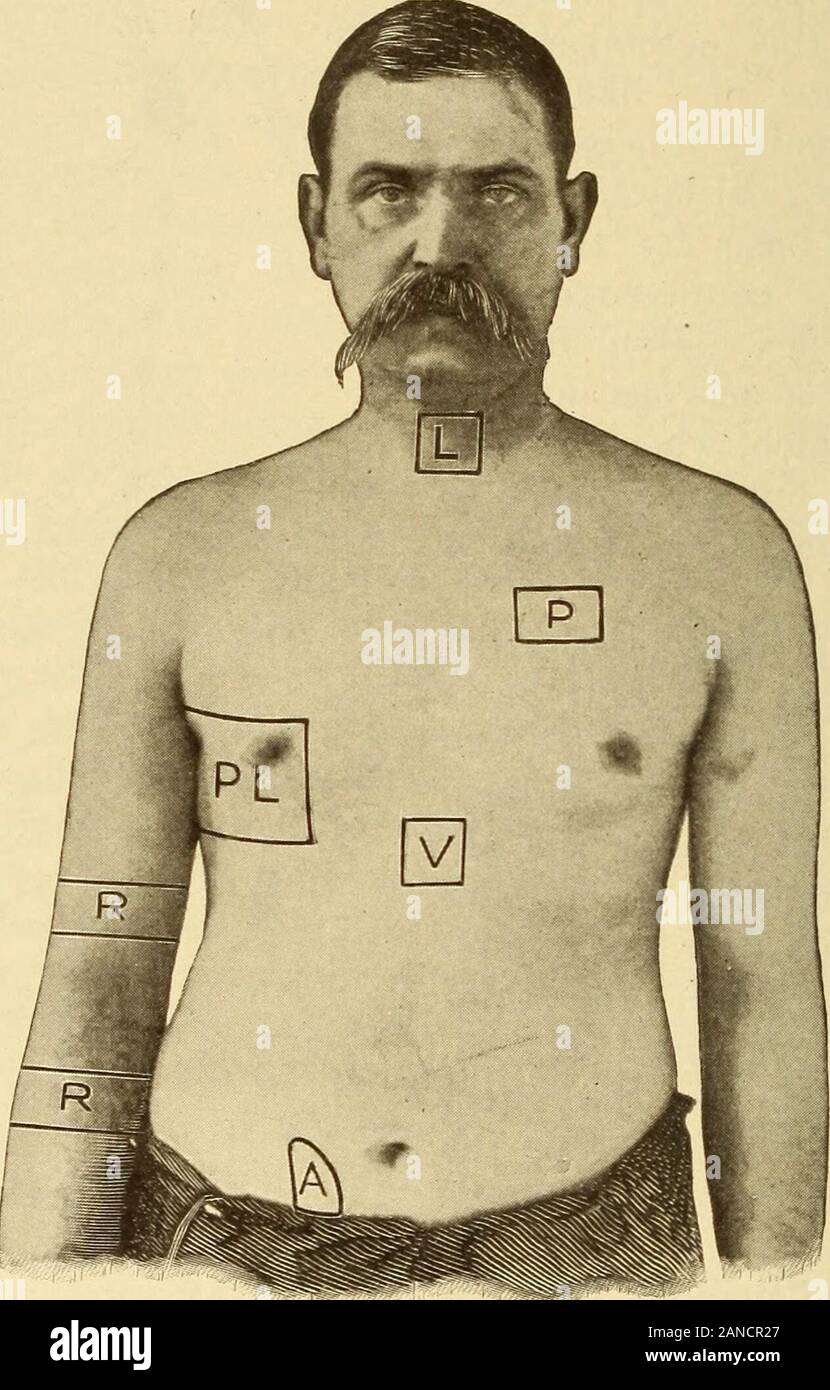A text-book of practical therapeutics . n solid lines.The arrows indicate the normal direc-tion of the nerve impulses or nerveconduction. S.c, superior cervicalganglion; I.e., inferior cervical gang-lion; T, the first thoracic ganglion; Sp.,the splanchnic nerve; C, the semilunaror celiac ganglion; m, the inferior mesen-teric ganglion; h, the hypogastric nerves;N. E., the nervus erigens. The num-erals indicate the corresponding spinalnerves. (Howells Physiology.) 578 REMEDIAL MEASURES OTHER THAN DRUGS area, but a little to one side of it, or at a spot known to be connectedintimately with the di

Image details
Contributor:
The Reading Room / Alamy Stock PhotoImage ID:
2ANCR27File size:
7.1 MB (371.5 KB Compressed download)Releases:
Model - no | Property - noDo I need a release?Dimensions:
1263 x 1978 px | 21.4 x 33.5 cm | 8.4 x 13.2 inches | 150dpiMore information:
This image is a public domain image, which means either that copyright has expired in the image or the copyright holder has waived their copyright. Alamy charges you a fee for access to the high resolution copy of the image.
This image could have imperfections as it’s either historical or reportage.
A text-book of practical therapeutics . n solid lines.The arrows indicate the normal direc-tion of the nerve impulses or nerveconduction. S.c, superior cervicalganglion; I.e., inferior cervical gang-lion; T, the first thoracic ganglion; Sp., the splanchnic nerve; C, the semilunaror celiac ganglion; m, the inferior mesen-teric ganglion; h, the hypogastric nerves;N. E., the nervus erigens. The num-erals indicate the corresponding spinalnerves. (Howells Physiology.) 578 REMEDIAL MEASURES OTHER THAN DRUGS area, but a little to one side of it, or at a spot known to be connectedintimately with the diseased area by nerve fibers. Thus, it is well known that in diseases of the eye the blister shouldbe applied back of the ear, and that in abdominal neuralgia or inpleurodynia the best results are reached, not from the application ofa blister to the spot where the pain is felt, but to the point upon thevertebral column where the nerve at fault takes its exit. The reasonfor this is that pain is always referred to the peripheral end of an. Fig. 85.—Showing the areas in which blisters are to be placed: P, pericarditis;A, appendicitis; L, laryngitis; V, vomiting or gastritis; P L, pleuritis; R, inflammationin joint. irritated nerve, and pleurodynia or abdominal pain often arises fromvertebral disease or inflammation about the spinal ligaments or theforamina of exit for the nerves. In a similar manner a blister is some-times applied in the early stages of hip disease, not to the knee orankle, where the pain is felt, but at the seat of the trouble—namely, the hip. Counterirritation is contraindicated by the presence ofany acute inflammation directly under the spot where it is proposedto place a blister; that is, if any reddening of the skin is present, the CO UN TERIRRITA TION 579 blister or other form of irritation must not be applied there. Ifused at all, it must be some little distance away, or a series of smallflying blisters should be placed around the inflamed zone. Flyingbli